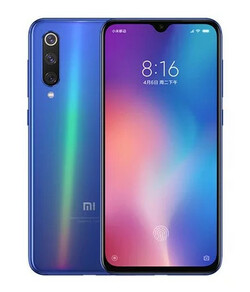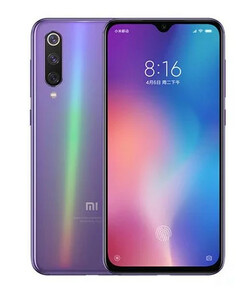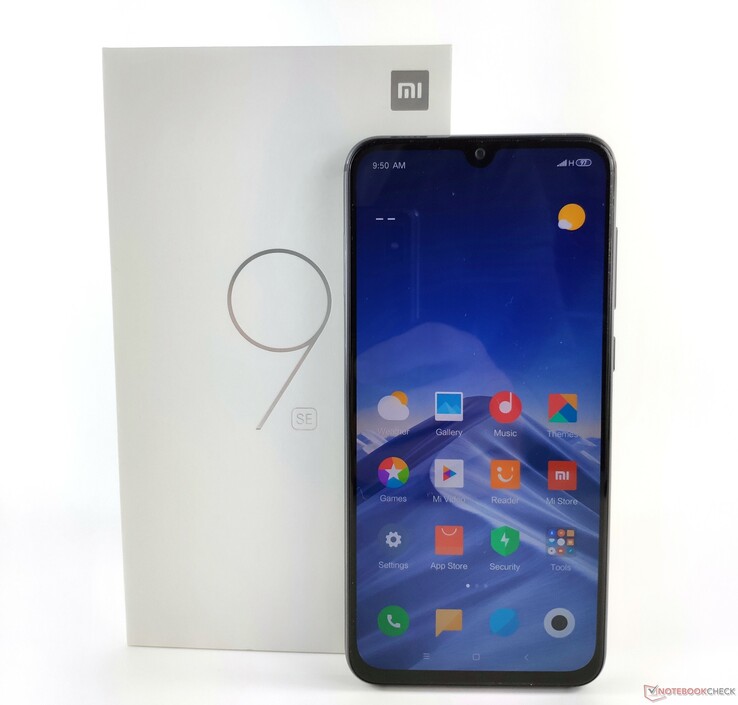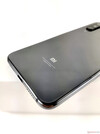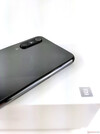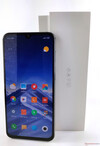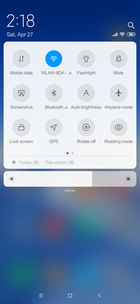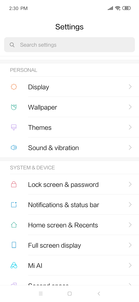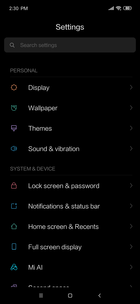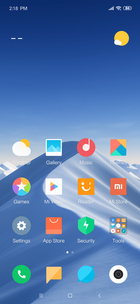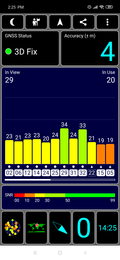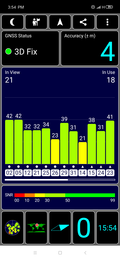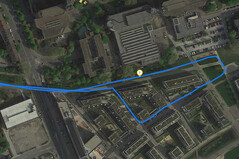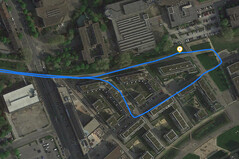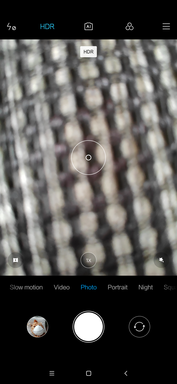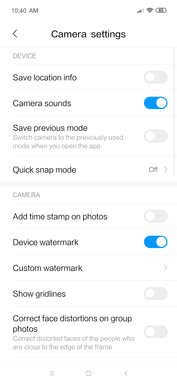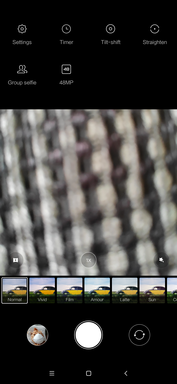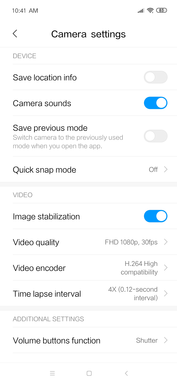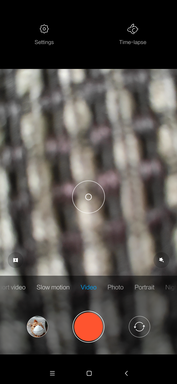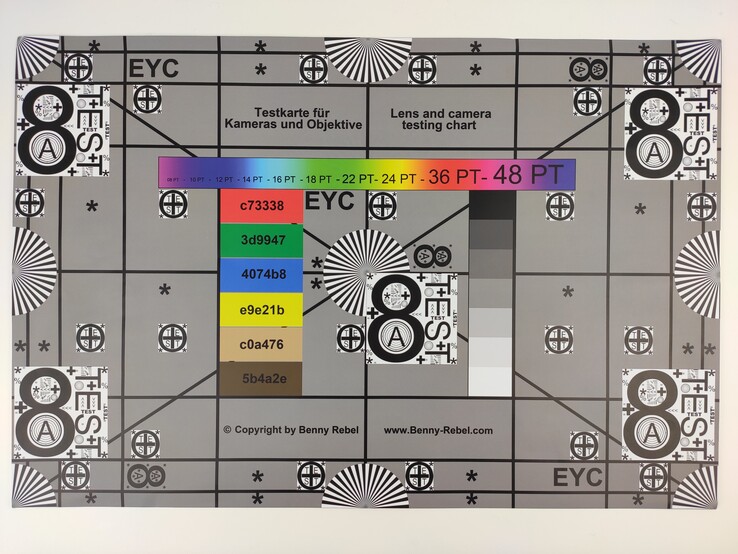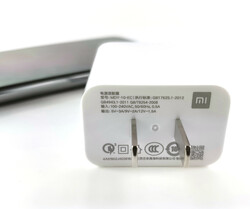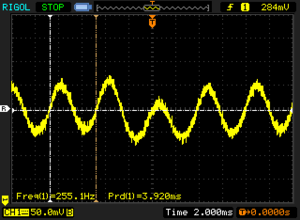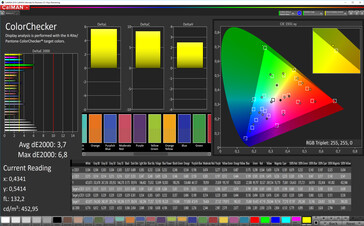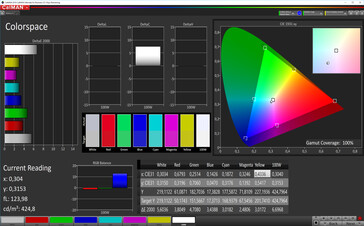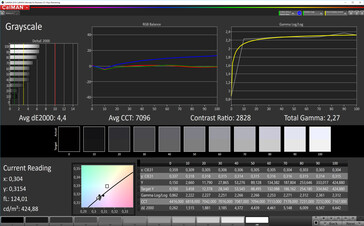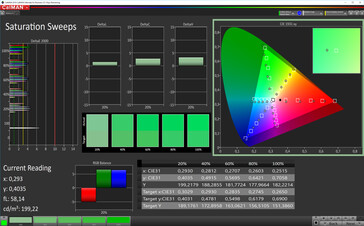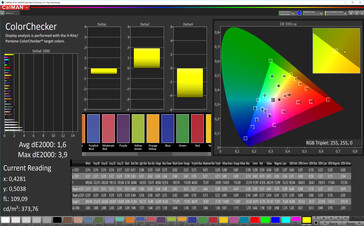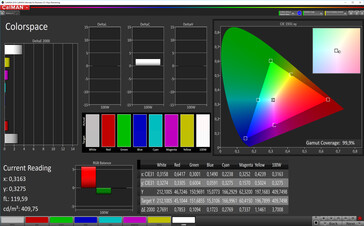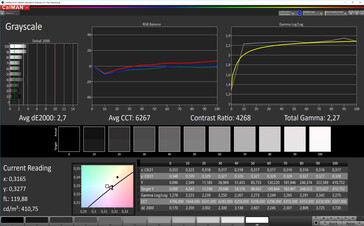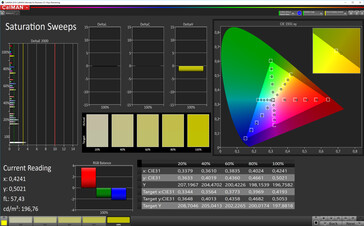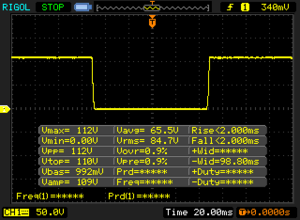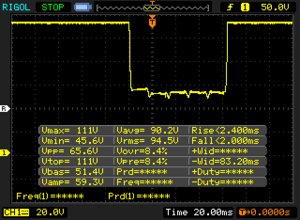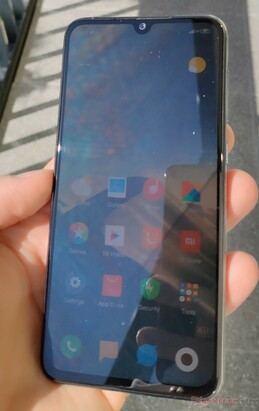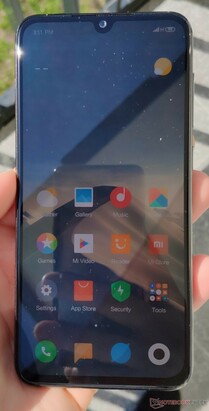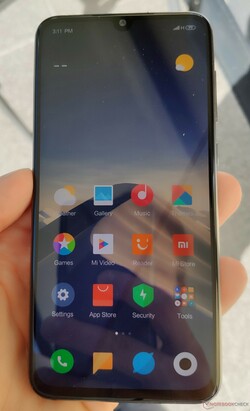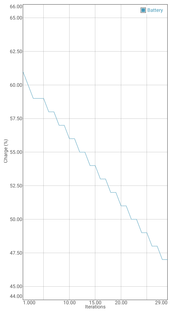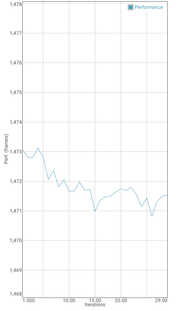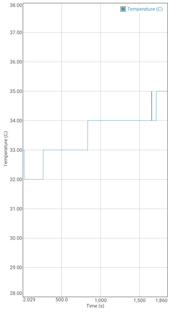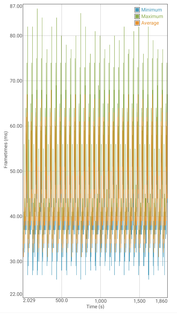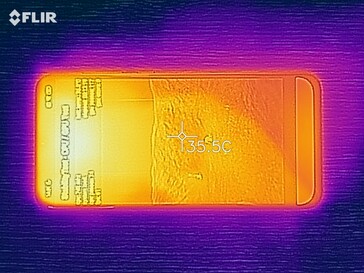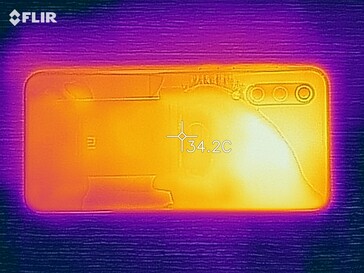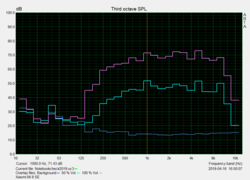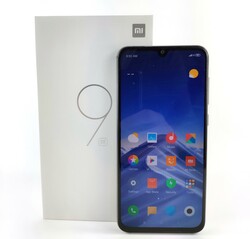Xiaomi Mi 9 SE Smartphone Review
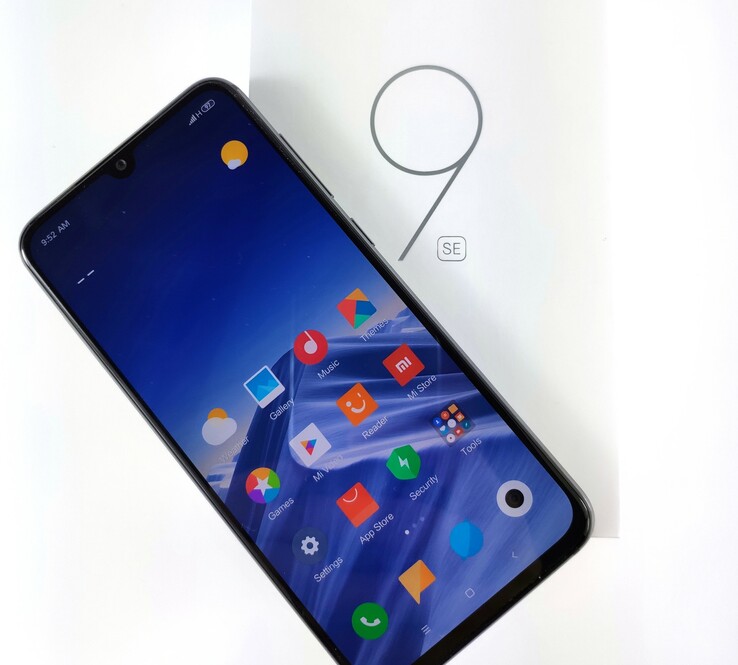
Following the release of its latest flagship, the Mi 9, Xiaomi is also introducing its midrange sibling, the Mi 9 SE. The latter has a 5.97-inch display with a 19.5:1 aspect ratio that allows it to be significantly narrower and thus considerably easier to hold than its flagship counterpart. The SE still retains many of the standout features of the Mi 9 though, which we shall get into in this detailed review.
Xiaomi equips the SE with an AMOLED panel that operates at 2340x1080, which the Chinese manufacturer markets as Full HD+. Moreover, it has a modern design, a 48 MP Sony IMX586 rear-facing camera sensor along with two other cameras and even a 20 MP front-facing sensor too, all of which we know well from our experience with the Mi 9. Xiaomi has equipped the SE with an in-display fingerprint sensor too, NFC, and fast UFS 2.1 flash storage. Underpinning the whole package is the Qualcomm Snapdragon 712 SoC, which we have not tested before.
The SE has been available since March and can now be bought from around 310 Euros (~$347). The base model comes with 6 GB RAM and 64 GB of internal storage, although you could pay around 40 Euros (~$45) more for 128 GB of storage. You will still only get the same amount of RAM though.
We should also point out that there are currently two language variants on the market. Xiaomi sells Chinese and global editions, between which there are only a few differences. The main two are that the global version has Google Play Services and the Play Store preinstalled, which the Chinese version lacks. Moreover, the global model also supports LTE Band 20. Again, the Chinese version lacks this. The global model currently costs around 20 Euros (~$22) more than the Chinese version too.
The SE sits in a highly competitive section with a seemingly endless list of competitors. We have narrowed our comparison devices to the Motorola Moto G7 Plus, the Samsung Galaxy A7 (2018), Samsung Galaxy A50, Sony Xperia 10 and the Xiaomi Pocophone F1. We will also compare the SE against its flagship namesake, the Mi 9, where possible.
Case
The SE weighs 155 g and is only 7.5 mm thick, which makes it svelter than its contemporaries. What’s more, the device measures just 147.5 x 70.5 mm, making it have a smaller overall footprint too. Xiaomi has covered the front of the SE with scratch-resistant 2.5D Corning Gorilla Glass 5 too, which subtly tapers into the device’s metal frame. The SE also has an 84% screen-to-body ratio thanks to its narrow notch and thin display bezels. The device would have a higher ratio too but for its comparatively thick chin, although this is in keeping with other modern smartphones. Overall, the SE looks just as modern as the Mi 9 in our opinion. We have no complaints here.
Like the front, the back of the SE is covered in slightly curved glass, in which there are cut-outs for the rear-facing camera array and the LED flash. Xiaomi currently sells the device in black, blue and purple, which the company markets as Piano Black, Ocean Blue and Lavender Violet, for reference. The latter has a gradient finish that shimmers and appears to change colour when the light hits it, which is more visually impressive than the other available colours.
The SE is a well-built phone, and we cannot bend or temporarily deform our review unit. Its physical buttons are distinguishable too and are easy to find when holding the device in your hand. Moreover, they sit firmly within their housings and have sharp pressure points. We are not fans of the large rear-facing camera array though, which protrudes several millimetres away from the back glass and prevents it from lying stably on a table or flat surface.
Connectivity
The SE has a USB Type-C port, to which you can connect peripherals like keyboards, mice or USB sticks thanks to USB On-The-Go (OTG) support. The device makes use of Miracast too for wirelessly streaming its display to external monitors and TVs.
Disappointingly, the Chinese version of the SE only supports DRM Widevine L3, which means that it can only stream DRM-protected content in SD from services like Amazon Prime Video and Netflix. However, Xiaomi has certified the global model with Widevine L1, so it does not have the same limitation as its Chinese counterpart.
Xiaomi has dispensed with the notification LED that the Mi 9 has, but it retains an always-on-display (AoD) that can display notifications when the device is asleep. The midrange smartphone features an infrared transmitter too along with an in-display fingerprint scanner and face-unlock technology. Xiaomi has also equipped the SE with a 3,070 mAh battery that can only charge via the USB 2.0 Type-C port. The device does not support Qi wireless charging.
Our review unit is the 128 GB model for reference, which had approximately 109.2 GB of free storage upon delivery. The SE does not have expandable memory, so you must rely on cloud storage if you run out of space on the device. It is dual-SIM though with its two nano-SIM card slots.
Software
The SE comes pre-loaded with MIUI 10, which Xiaomi bases on Android 9.0 Pie. Our test device had the Chinese stable 10.2 ROM installed at the time of testing and the March Android security patches, which were up to date. The Chinese model only has Chinese and English language options so we would recommend considering the global edition if you prefer to use your smartphone in another language.
As we mentioned earlier in this review, the Chinese version does not come with any Google software preinstalled, so that means no Google Play Services and no Google Play Store. Xiaomi preinstalls its Google alternatives, but it is possible to install the Play Store should you need it. We would recommend doing some research before trying to do so though, as some apps like Netflix may not install even if you get the Play Store working.
By contrast, the global edition does not have any of these usability issues. It even has other languages besides Chinese and English preinstalled too.
MIUI is a heavily customised and skinned version of Android that hardly represents the OS on which it is based. MIUI 10 is colourful and relatively intuitive, but it may take some acclimatisation for Android regulars. Xiaomi does not include an app drawer within the default launcher, which makes MIUI feel more like iOS. Other elements are similar to stock Android though, like the pull-down notifications and Quick Settings. However, the main settings menu looks completely different, while Xiaomi arranges the Recents pane vertically with two apps side-by-side, which is something that we had not seen before. The OS has a white theme by default, but you can change this with the included Themes app should you wish to do so.
Communication & GPS
Our review unit supports 10 LTE bands compared to the global edition’s 11, although the former cannot utilise bands 20 and 28, which are being increasingly used for LTE networks in Europe. Both models support five UMTS frequencies and quad-band GSM too.
The SE can connect to the same number of LTE bands on either of its SIM card slots, for reference. Xiaomi has not imposed any restrictions in this regard.
The SE supports Bluetooth 5.0, IR and has an NFC chip for services like Google Pay. We have come to expect Bluetooth and NFC connectivity with modern smartphones but having an integrated IR blaster remains something of a rarity. Huawei is the only other major OEM to continue to equip its devices with IR sensors.
The SE also supports all major Wi-Fi standards up to IEEE 802.11ac and can connect to 2.4 GHz or 5 GHz networks. In everyday use, our review unit maintained decent, albeit somewhat unstable, Wi-Fi reception as our iperf3 Client comparison tables below demonstrate. The device achieved a -31 dBm attenuation when connected and placed next to our Telekom Speedport W921V router, which is impressively low.
Xiaomi has equipped the SE with a MU-MIMO antenna too, which helps it achieve fast Wi-Fi transfer speeds, although there is still room for improvement. Our review unit finished fifth in both our iperf3 Client Wi-Fi tests with our Linksys EA8500 router and at least 350 Mb/s behind the Pocophone F1 in first place. The SE also cannot compete with the Mi 9 here either. Overall, the SE has fast Wi-Fi connectivity even if its speeds jump around a bit too much for our liking. This should not impact on using the device daily though.
The SE uses BeiDou, Galileo, and GPS, GLONASS for location services, which helps our review unit achieve a satellite fix with up to four metres accuracy wherever we tested it. The device can find a satellite quickly too regardless of whether we tested it indoors or outdoors.
We also took the SE on a bike ride with our trusty Garmin Edge 500 to compare their location accuracy. Only 80 metres separated the routes that they recorded us having cycled over a 9.2 km ride, which is impressively accurate for a midrange smartphone.
The SE only made minor deviations from the route that the Garmin plotted too. In short, the device is accurate enough for all general navigation tasks like cycling, driving or walking. You should experience no issues with using the SE for turn-by-turn navigations during any of these scenarios.
Telephone Functions & Call Quality
Xiaomi preinstalls its phone app instead of the Google one. The app functions like almost every other phone app though with its collapsible keypad, call history menu and quick access to your contacts.
The SE, regardless of model, supports voice over LTE on both its SIM cards (dual VoLTE). However, your carrier must provision a device before it can use VoLTE on its network. Since our review unit is a Chinese device, it should come as no surprise that we could not activate VoLTE with either our Telekom or Vodafone SIMs. You will experience the same issues with the global edition too unless a specific carrier starts selling the device. The SE does not support Wi-Fi calling (VoWiFi) either.
The voice quality of our review unit is decent. The device reproduced our call partner’s voice clearly throughout our tests, while the microphone captured our voice well too, even when making video calls. We also experienced no disturbing dropouts or reception problems during our time with the device.
Cameras
The SE’s 20 MP front-facing sensor has an f/2.0 aperture that takes good quality selfies. Photos even look well-lit in increasingly dark conditions too and have solid dynamics thanks to HDR support. Xiaomi has also integrated an AI-based beauty mode that gives you endless options for tweaking the look of your selfies. The SE tends to overexpose selfies for our liking though, as is often the case with front-facing cameras.
The SE also has three rear-facing cameras just like its bigger sibling. Xiaomi claims that it has covered the camera housing in a sapphire glass layer. JerryRigEverything demonstrated that the corresponding layer on the Mi 9 does contain sapphire, but it not as scratch-resistant as real sapphire. Instead, it scratches at a level 6, with deeper grooves at a level 7.
The main camera of the three is a 48 MP Sony IMX586 sensor that has a wide f/1.75 aperture. We have seen this sensor before in devices like the Honor View 20 and have been impressed by its ability to interpolate four pixels into one to create a 12 MP image that has higher photosensitivity than a 48 MP or traditional 12 MP image would. In short, this method should theoretically help you take better low-light photos than other older sensors would.
The interpolated 12 MP photos look especially impressive in daylight. Our test shots are detailed and have good colour reproduction, along with an even distribution of sharpness across the whole scene. The dynamic range could be better though, while low-light shots are dominated by noticeable image noise. Scene 3, for example, also looks comparatively blurry. The camera exposes the scene well though.
The SE also has a wide-angle sensor with a 123° field of view (FOV) and an f/2.4 aperture. Lastly, there is an 8 MP telephoto lens with an f/2.4 aperture that Xiaomi claims can deliver 2x lossless zoom and realistic-looking bokeh shots. Our review unit generally lives up to expectations here, although there are a few visible artefacts.
The wide-angle sensor takes decent-looking photos too, although it suffers from giving some objects a slight fish-eye look like many comparable sensors do. The sensor also cannot capture scenes in the same detail as the Sony IMX586 can, especially in low light. The same applies to the 8 MP telephoto lens too.
The front-facing camera can record videos in up to 1920x1080 at 30 FPS, while the 48 MP manages a slightly higher resolution of 3840x2160 but also at 30 FPS. Neither sensor supports optical image stabilisation (OIS) though so you will struggle to eliminate any minor camera shakes while recording unless you use a tripod or a gimbal. The SE can record slow-motion videos in 960 FPS at 720p too.
We have included some camera comparisons below between the SE, the Galaxy S10+ and the ROG Phone below. However, we shall also be publishing an article comparing the cameras of the Mi 9, Mi 8 and Mi Mix 3 against Xiaomi’s latest midrange smartphone. We shall provide a link to the article when it is published.
Update: Please see our Mi-series camera comparison article for a closer look at the Mi 9 SE's cameras. We have included numerous additional test photos and compared them against the results that the Mi 9, Mi 8 and Mi Mix 3 produce.
We also subjected the SE to further camera tests under controlled lighting conditions to assess the accuracy of its colour reproduction along with its ability to capture fine lines or structures. In short, the 48 MP sensor reproduces colours well, although greys and whites are noticeably warmer than the ColorChecker Passport reference colour.
Our review unit did a good job of capturing our test chart too. Coloured areas stand out well from greys, while the image looks evenly sharp. Contrast levels drop off in the bottom corners of the chart, and there are some artefacts around the text on dark backgrounds, but these are minor issues.
Accessories & Warranty
Xiaomi includes a USB cable, a silicone case, and a USB Type-C to 3.5 mm jack adapter in the box along with a modular 2A/9V charger.
TradingShenzhen, which kindly provided us with our review unit, also added an EU plug adapter and a USB OTG adapter. This is only at the effort of TradingShenzhen though, so you will not necessarily receive these accessories from other third-party suppliers.
The SE comes with 12 months manufacturer’s warranty. Our review unit is an import, so its warranty coverage is mostly limited to China. We suggest researching the advantages and pitfalls of importing a device from China before purchasing any Chinese smartphone. TradingShenzhen has warehouses in Europe to which you can send a warranty return, for example. However, Xiaomi may require you to send the SE back to China, which would be time-consuming and expensive.
Please see our Guarantees, Return Policies & Warranties FAQ too for country-specific warranty information.
Input Devices & Operation
MIUI 10 has two methods of navigating through the device. Xiaomi enables three navigation buttons by default like many Android OEMs, but it has also integrated gestures that it calls “full-screen gestures”, which you activate by swiping from the bottom and the sides of the display. These can be enabled on other devices running MIUI 10 like the Mi 9 and Mi Mix 3 too.
The SE has a 10-point multitouch touchscreen, which responded accurately and quickly throughout our tests. The touchscreen is also accurate even into the corners of our review unit’s display.
The SE has an in-screen fingerprint sensor like its bigger sibling too, which is rare for a midrange smartphone. The in-screen sensor in our test device recognised our fingers without issue for the most part, although it occasionally took longer to do so than a conventional sensor would. In short, in-screen sensors are not yet on the same level as those that OEMs previously placed on the back of their devices.
Lastly, the SE can use its front-facing camera for 2D facial authentication. This can unlock the device, but it is not secure enough to be used as biometric authentication for services that contain sensitive information like banking apps or password managers. The camera recognises our face even in the dark though and unlocks our test device about as quickly as the fingerprint sensor does.
Display
The SE has a 5.97-inch AMOLED panel made by Samsung. The display operates natively at 2340x1080 and has a pixel density of 432 PPI. Although current flagship smartphones tend to have higher resolution displays with more pixels per inch than the SE, the display in our review unit still looks sharp to our eyes. We cannot pick out individual fonts even with small fonts when looking at the display from normal viewing distances. Your eyes may be better than ours, but the SE’s comparatively low pixel density should not be a problem in daily use.
Our test device achieved an average maximum brightness of 586 cd/m² according to X-Rite i1Pro 2 with the ambient light sensor activated. This value puts the SE on almost the same level as the Mi 9 and makes it 16% brighter than the Pocophone F1. Our review unit achieved an impressive 711 cd/m² in the more realistic APL50 test too, although the maximum luminosity dropped to 411 cd/m² when we set the brightness manually.
Disappointingly, the SE uses pulse-width modulation (PWM) to adjust its display brightness. PWM looks like flickering to human eyes, which can cause health issues like eye strain and headaches for some people. The display in our review unit flickers at 255 Hz, which is low enough to cause problems for those who are PWM sensitive.
| |||||||||||||||||||||||||
Brightness Distribution: 97 %
Center on Battery: 583 cd/m²
Contrast: ∞:1 (Black: 0 cd/m²)
ΔE ColorChecker Calman: 1.6 | ∀{0.5-29.43 Ø4.78}
ΔE Greyscale Calman: 2.7 | ∀{0.09-98 Ø5}
99.9% sRGB (Calman 2D)
Gamma: 2.27
CCT: 6267 K
| Xiaomi Mi 9 SE AMOLED, 2340x1080, 6" | Samsung Galaxy A7 2018 Super AMOLED, 2220x1080, 6" | Sony Xperia 10 IPS-LCD, 2520x1080, 6" | Xiaomi Poco F1 IPS, 2246x1080, 6.2" | Samsung Galaxy A50 AMOLED, 2340x1080, 6.4" | Motorola Moto G7 Plus IPS, 2270x1080, 6.2" | Xiaomi Mi 9 AMOLED, 2340x1080, 6.4" | |
|---|---|---|---|---|---|---|---|
| Screen | 10% | -77% | -53% | -30% | -109% | 23% | |
| Brightness middle (cd/m²) | 583 | 570 -2% | 547 -6% | 489 -16% | 644 10% | 537 -8% | 593 2% |
| Brightness (cd/m²) | 577 | 565 -2% | 525 -9% | 486 -16% | 628 9% | 525 -9% | 587 2% |
| Brightness Distribution (%) | 97 | 93 -4% | 93 -4% | 93 -4% | 91 -6% | 85 -12% | 94 -3% |
| Black Level * (cd/m²) | 0.36 | 0.34 | 0.58 | ||||
| Colorchecker dE 2000 * | 1.6 | 1.5 6% | 4.6 -188% | 3.8 -138% | 2.64 -65% | 6.41 -301% | 0.9 44% |
| Colorchecker dE 2000 max. * | 3.9 | 3.6 8% | 12.1 -210% | 7.1 -82% | 9.23 -137% | 10.86 -178% | 2 49% |
| Greyscale dE 2000 * | 2.7 | 1.2 56% | 3.9 -44% | 4.4 -63% | 2.5 7% | 6.7 -148% | 1.5 44% |
| Gamma | 2.27 97% | 2.07 106% | 2.17 101% | 2.22 99% | 2.024 109% | 2.099 105% | 2.27 97% |
| CCT | 6267 104% | 6504 100% | 7158 91% | 7213 90% | 6649 98% | 8310 78% | 6548 99% |
| Contrast (:1) | 1519 | 1438 | 926 |
* ... smaller is better
Screen Flickering / PWM (Pulse-Width Modulation)
| Screen flickering / PWM detected | 255 Hz | ||
The display backlight flickers at 255 Hz (worst case, e.g., utilizing PWM) . The frequency of 255 Hz is relatively high, so most users sensitive to PWM should not notice any flickering. However, there are reports that some users are still sensitive to PWM at 500 Hz and above, so be aware. In comparison: 53 % of all tested devices do not use PWM to dim the display. If PWM was detected, an average of 8098 (minimum: 5 - maximum: 343500) Hz was measured. | |||
AMOLED panels typically produce pure blacks because they can switch off pixels individually, as the display in the SE can. Blacks look rich and help the display achieve a theoretically infinite contrast ratio, which makes colours look sharper than they do on devices with IPS panels like the Pocophone F1. Xiaomi has included two contrast modes too, which it has labelled “standard” and “increased contrast” within the main settings menu just like it did with the Mi 9.
We also subjected our review unit to further display tests with a photo spectrometer and CalMAN analysis software. These tests demonstrate that the SE has an impressively colour-accurate display with comparatively low DeltaE deviations from the sRGB colour space, especially for a midrange smartphone. All values are better than the ideal value of 3, although the display has a slightly warmer colour temperature than we would have liked when set to the standard colour profile. This is less than 250 K short of the ideal value of 6,500 K though, so the SE only just misses out on this target. The display in our test device does not have a colour tint to it either. We did not notice one with our eyes, which CalMAN and our photo spectrometer reinforced.
Display Response Times
| ↔ Response Time Black to White | ||
|---|---|---|
| 4 ms ... rise ↗ and fall ↘ combined | ↗ 2 ms rise | |
| ↘ 2 ms fall | ||
| The screen shows very fast response rates in our tests and should be very well suited for fast-paced gaming. In comparison, all tested devices range from 0.1 (minimum) to 240 (maximum) ms. » 15 % of all devices are better. This means that the measured response time is better than the average of all tested devices (20.2 ms). | ||
| ↔ Response Time 50% Grey to 80% Grey | ||
| 4.4 ms ... rise ↗ and fall ↘ combined | ↗ 2.4 ms rise | |
| ↘ 2 ms fall | ||
| The screen shows very fast response rates in our tests and should be very well suited for fast-paced gaming. In comparison, all tested devices range from 0.165 (minimum) to 636 (maximum) ms. » 15 % of all devices are better. This means that the measured response time is better than the average of all tested devices (31.6 ms). | ||
The SE remains easy to use outdoors thanks to its bright AMOLED panel. The display will induce reflections on sunny days, but that will not prevent you from being able to read it. Having the device set to manual brightness will make seeing things onscreen trickier than if you leave auto-brightness on though, the reasons for which we covered at the start of the Display section of this review.
Performance
The Snapdragon 712 is Qualcomm’s new midrange ARMv8-based SoC, which it introduced in January. The chip succeeds the Snapdragon 710 and can clock up to 2.3 GHz, which is 100 MHz higher than its predecessor. According to Qualcomm, this small clock speed boost should result in a 10% improvement in performance.
The SoC integrates a total of eight processor cores. The Snapdragon 712 has two Cortex-A75 cores that can clock up to 2.3 GHz and six slower Cortex-A55 cores that only reach 1.8 GHz. Qualcomm manufactures the chipset on a 10nm FinFET process, which allows the Snapdragon 712 to run more efficiently than its predecessors that were built on older processes. The SoC also integrates a Qualcomm Adreno 616 GPU, which is the same graphics core as Qualcomm uses in the Snapdragon 710.
The Snapdragon 712 performed well in most synthetic benchmarks, although its 3DMark scores are surprisingly low. Generally, the SE sits clearly ahead of the Galaxy A50 and its Samsung Exynos 9610 even in GPU benchmarks. We will also shortly be publishing a Snapdragon 712 and Snapdragon 710 comparison article that will go into depth about the differences between the two SoCs.
The SE and Snapdragon 712 sit in the midfield of system benchmarks too like Basemark OS II and PCMark. The midrange SoC cannot compete with the Snapdragon 845 or Snapdragon 855 in our flagship Xiaomi comparison devices. However, it consistently outperforms the Snapdragon 630, Snapdragon 636, Exynos 7885 and Exynos 9610.
Subjectively, our review unit runs smoothly, but we did notice some delays. MIUI aggressively clears apps from the system cache, which means that our review unit regularly has to reload apps that we recently used. By contrast, other comparable custom versions of Android are not as aggressive. In short, MIUI makes 6 GB RAM seem limited when paired with the Snapdragon 712.
Update: Please see our Snapdragon 712 benchmarks article for more information about the SoC. We have also compared it against the Snapdragon 710 along with the Snapdragon 855 and Snapdragon 845.
| Basemark GPU 1.1 | |
| 1920x1080 Vulkan Medium Offscreen (sort by value) | |
| Xiaomi Mi 9 SE | |
| Xiaomi Poco F1 | |
| Samsung Galaxy A50 | |
| Xiaomi Mi 9 | |
| Average Qualcomm Snapdragon 712 (n=1) | |
| Vulkan Medium Native (sort by value) | |
| Xiaomi Mi 9 SE | |
| Xiaomi Poco F1 | |
| Samsung Galaxy A50 | |
| Xiaomi Mi 9 | |
| Average Qualcomm Snapdragon 712 (n=1) | |
| 1920x1080 OpenGL Medium Offscreen (sort by value) | |
| Xiaomi Mi 9 SE | |
| Xiaomi Poco F1 | |
| Samsung Galaxy A50 | |
| Xiaomi Mi 9 | |
| Average Qualcomm Snapdragon 712 (n=1) | |
| AnTuTu v7 - Total Score (sort by value) | |
| Xiaomi Mi 9 SE | |
| Samsung Galaxy A7 2018 | |
| Sony Xperia 10 | |
| Xiaomi Poco F1 | |
| Samsung Galaxy A50 | |
| Motorola Moto G7 Plus | |
| Xiaomi Mi 9 | |
| Average Qualcomm Snapdragon 712 (n=1) | |
| VRMark - Amber Room (sort by value) | |
| Xiaomi Mi 9 SE | |
| Xiaomi Poco F1 | |
| Samsung Galaxy A50 | |
| Xiaomi Mi 9 | |
| Average Qualcomm Snapdragon 712 (n=1) | |
| Basemark ES 3.1 / Metal - offscreen Overall Score (sort by value) | |
| Xiaomi Mi 9 SE | |
| Samsung Galaxy A50 | |
| Xiaomi Mi 9 | |
| Average Qualcomm Snapdragon 712 (n=1) | |
| Average of class Smartphone (205 - 7731, n=35, last 2 years) | |
The SE breezed through web-browsing though during our tests. Chrome consistently loaded pages quickly, while scrolling always remained smooth. Our review unit performed well in browser benchmarks too.
| Jetstream 2 - 2.0 Total Score | |
| Average of class Smartphone (23.8 - 387, n=149, last 2 years) | |
| Xiaomi Mi 9 (Chrome 73) | |
| Xiaomi Mi 9 SE (Chrome 73) | |
| Average Qualcomm Snapdragon 712 (n=1) | |
| Sony Xperia 10 (Chrome Version 73) | |
| Speedometer 2.0 - Result 2.0 | |
| Average of class Smartphone (15.2 - 643, n=122, last 2 years) | |
| Xiaomi Mi 9 (Chrome 73.0.3683.75) | |
| Xiaomi Mi 9 SE (Chrome 73) | |
| Average Qualcomm Snapdragon 712 (n=1) | |
| Samsung Galaxy A50 (Chome 73) | |
| WebXPRT 3 - Overall | |
| Average of class Smartphone (38 - 380, n=31, last 2 years) | |
| Xiaomi Mi 9 (Chrome 73.0.3683.75) | |
| Xiaomi Mi 9 SE (Chrome 73) | |
| Samsung Galaxy A50 (Chrome 73) | |
| Average Qualcomm Snapdragon 712 (47 - 72, n=2) | |
| Samsung Galaxy A7 2018 (Chrome 70) | |
| Motorola Moto G7 Plus | |
| Sony Xperia 10 (Chrome Version 73) | |
| Octane V2 - Total Score | |
| Average of class Smartphone (2228 - 121337, n=197, last 2 years) | |
| Xiaomi Mi 9 (Chrome 73.0.3683.75) | |
| Xiaomi Poco F1 (Chrome 68) | |
| Xiaomi Mi 9 SE (Chrome 73) | |
| Average Qualcomm Snapdragon 712 (10328 - 13562, n=2) | |
| Samsung Galaxy A50 (Chrome 73) | |
| Samsung Galaxy A7 2018 (Chrome 70) | |
| Motorola Moto G7 Plus | |
| Sony Xperia 10 (Chrome Version 73) | |
| Mozilla Kraken 1.1 - Total | |
| Sony Xperia 10 (Chrome Version 73) | |
| Motorola Moto G7 Plus | |
| Samsung Galaxy A7 2018 (Chrome 70) | |
| Samsung Galaxy A50 (Chrome 73) | |
| Average Qualcomm Snapdragon 712 (2912 - 4383, n=2) | |
| Xiaomi Mi 9 SE (Chrome 73) | |
| Xiaomi Poco F1 (Chrome 68) | |
| Xiaomi Mi 9 (Chrome 73.0.3683.75) | |
| Average of class Smartphone (257 - 28190, n=155, last 2 years) | |
* ... smaller is better
Xiaomi equips the SE with fast UFS 2.1 flash storage that performed well in AndroBench 3-5 benchmarks. Our review unit outperformed most of our comparison devices, although there is room for improvement with the speed at which the SE writes small blocks of data.
| Xiaomi Mi 9 SE | Samsung Galaxy A7 2018 | Sony Xperia 10 | Xiaomi Poco F1 | Samsung Galaxy A50 | Motorola Moto G7 Plus | Xiaomi Mi 9 | Average 128 GB UFS 2.0 Flash | Average of class Smartphone | |
|---|---|---|---|---|---|---|---|---|---|
| AndroBench 3-5 | -35% | -27% | -2% | -7% | 42% | 206% | 99% | 708% | |
| Sequential Read 256KB (MB/s) | 492.5 | 295.8 -40% | 273.8 -44% | 705 43% | 507 3% | 283.6 -42% | 666 35% | 530 ? 8% | 2228 ? 352% |
| Sequential Write 256KB (MB/s) | 190.1 | 104.9 -45% | 232.9 23% | 155.6 -18% | 192.1 1% | 208.7 10% | 388.3 104% | 212 ? 12% | 1852 ? 874% |
| Random Read 4KB (MB/s) | 115.8 | 84 -27% | 53.1 -54% | 101 -13% | 98.9 -15% | 76.6 -34% | 149.4 29% | 130.6 ? 13% | 296 ? 156% |
| Random Write 4KB (MB/s) | 21.86 | 15.45 -29% | 14.39 -34% | 17.81 -19% | 18.2 -17% | 73.1 234% | 165.3 656% | 101.2 ? 363% | 339 ? 1451% |
| Sequential Read 256KB SDCard (MB/s) | 78.2 ? | 83.2 ? | 85.3 ? | 73.9 ? | 82.8 ? | 68.3 ? | |||
| Sequential Write 256KB SDCard (MB/s) | 64.4 ? | 63.8 ? | 65.6 ? | 60.7 ? | 62.1 ? | 53.2 ? |
Games
The Adreno 616 handles all modern triple-A games with ease. Our review unit can play demanding titles like Asphalt 9: Legends or PUBG Mobile smoothly at around 30 FPS, and older titles such as Dead Trigger 2 at a more fluid 60 FPS.
We also had no issues with any sensors or the touchscreen during our gaming tests either.
PUBG Compare
Asphalt Legends
Dead Trigger 2
Emissions
Temperature
The case and the display of our review unit hardly heat up in daily use. While surface temperatures only just exceed 30 °C at idle, they only reach a maximum of 35.6 °C under sustained load, which is comparatively cool. The device will feel warm to the touch while playing games, but it should never feel uncomfortably hot.
We also subjected our review unit to looped GFXBench battery tests to see how it managed its performance under extreme load. The complex Manhattan 3.1 benchmark demonstrates that the system maintains its performance even as the strain being placed on the SoC increases. Performance fluctuated by less than 1% during these tests, so you should experience no thermal throttling while gaming or in daily use.
(+) The maximum temperature on the upper side is 35.6 °C / 96 F, compared to the average of 35.2 °C / 95 F, ranging from 21.9 to 247 °C for the class Smartphone.
(+) The bottom heats up to a maximum of 34.2 °C / 94 F, compared to the average of 34 °C / 93 F
(+) In idle usage, the average temperature for the upper side is 29.6 °C / 85 F, compared to the device average of 32.9 °C / 91 F.
Speakers
The SE has a single speaker on the underside of its frame, which reached a maximum of 82 dB(A) during our tests. The speaker has surprisingly good sound quality for a midrange smartphone, which makes the SE ideal for watching YouTube videos or listening to the occasional song.
As expected, the speaker reproduces hardly any bass, but that is a wider problem of most laptops and smartphones. Mid-tones tend to dominate the frequencies produced, but at least the speaker does not sound shrill at high volumes. There are some super high-pitched frequencies, but these should not sound irritating in daily use.
Disappointingly, the SE does not have a headphone jack, which would have been useful. However, Xiaomi includes a Type-C to 3.5 mm adapter in the box, allowing you to connect traditional headphones to the device. Our review unit delivered decent-sounding and loud audio to the headphones and external speakers with which we tested its headphone jack, so there are no complaints here. The SE also supports AAC, aptX HD, and LDAC codecs for use with Bluetooth headphones and speakers. These codecs allow the SE to stream higher resolution audio files than other codecs like SBC would.
Xiaomi Mi 9 SE audio analysis
(±) | speaker loudness is average but good (81.5 dB)
Bass 100 - 315 Hz
(-) | nearly no bass - on average 21.9% lower than median
(±) | linearity of bass is average (12.8% delta to prev. frequency)
Mids 400 - 2000 Hz
(+) | balanced mids - only 2.5% away from median
(+) | mids are linear (4.5% delta to prev. frequency)
Highs 2 - 16 kHz
(+) | balanced highs - only 3.2% away from median
(+) | highs are linear (6.3% delta to prev. frequency)
Overall 100 - 16.000 Hz
(±) | linearity of overall sound is average (18.7% difference to median)
Compared to same class
» 21% of all tested devices in this class were better, 9% similar, 69% worse
» The best had a delta of 11%, average was 35%, worst was 134%
Compared to all devices tested
» 42% of all tested devices were better, 8% similar, 50% worse
» The best had a delta of 4%, average was 24%, worst was 134%
Xiaomi Mi 9 audio analysis
(+) | speakers can play relatively loud (87.1 dB)
Bass 100 - 315 Hz
(-) | nearly no bass - on average 25.1% lower than median
(±) | linearity of bass is average (10.7% delta to prev. frequency)
Mids 400 - 2000 Hz
(+) | balanced mids - only 4.4% away from median
(+) | mids are linear (5% delta to prev. frequency)
Highs 2 - 16 kHz
(+) | balanced highs - only 3.4% away from median
(+) | highs are linear (4% delta to prev. frequency)
Overall 100 - 16.000 Hz
(±) | linearity of overall sound is average (17.3% difference to median)
Compared to same class
» 11% of all tested devices in this class were better, 8% similar, 81% worse
» The best had a delta of 11%, average was 35%, worst was 134%
Compared to all devices tested
» 31% of all tested devices were better, 8% similar, 60% worse
» The best had a delta of 4%, average was 24%, worst was 134%
Battery Life
Power Consumption
The SE has comparatively low power consumption thanks to its efficient SoC. Our review unit consumed a minimum of 0.53 W at idle and a maximum of 4.83 W under load. In short, it consistently consumed less power than our comparison devices.
Please keep in mind that some of this is down to MIUI, which aggressively manages apps to save battery. It does so vigorously that you must manually tweak power-saving settings to allow some app notifications to come through.
| Off / Standby | |
| Idle | |
| Load |
|
Key:
min: | |
| Xiaomi Mi 9 SE 3070 mAh | Samsung Galaxy A7 2018 3300 mAh | Sony Xperia 10 2870 mAh | Xiaomi Poco F1 4000 mAh | Samsung Galaxy A50 4000 mAh | Motorola Moto G7 Plus 3000 mAh | Xiaomi Mi 9 3300 mAh | Average Qualcomm Snapdragon 712 | Average of class Smartphone | |
|---|---|---|---|---|---|---|---|---|---|
| Power Consumption | -41% | -44% | -57% | -57% | -72% | -31% | -4% | -76% | |
| Idle Minimum * (Watt) | 0.53 | 0.71 -34% | 0.72 -36% | 0.65 -23% | 0.8 -51% | 1.1 -108% | 0.67 -26% | 0.54 ? -2% | 0.842 ? -59% |
| Idle Average * (Watt) | 1.18 | 1.36 -15% | 2.16 -83% | 1.97 -67% | 1.5 -27% | 1.7 -44% | 1.26 -7% | 1.285 ? -9% | 1.439 ? -22% |
| Idle Maximum * (Watt) | 1.2 | 1.47 -23% | 2.17 -81% | 2.01 -68% | 1.7 -42% | 2.1 -75% | 1.29 -8% | 1.32 ? -10% | 1.624 ? -35% |
| Load Average * (Watt) | 3.04 | 5.13 -69% | 3.32 -9% | 4.29 -41% | 5.9 -94% | 5.1 -68% | 3.71 -22% | 3.01 ? 1% | 7.03 ? -131% |
| Load Maximum * (Watt) | 4.83 | 7.89 -63% | 5.34 -11% | 9.05 -87% | 8.3 -72% | 7.9 -64% | 9.3 -93% | 4.88 ? -1% | 11.3 ? -134% |
* ... smaller is better
Battery Life
The SE has a 3,070 mAh battery, which is 50 mAh smaller than the battery in the Mi 8 SE. Moreover, many of our comparison devices have between 3,300 mAh and 4,000 mAh batteries. Only the Xperia 10 has a smaller battery than the SE.
Correspondingly, our review unit has worse battery life overall than all our comparison devices except for the Xperia 10. The SE lasted for around 8.5 hours in our practical Wi-Fi battery life test, which is acceptable. Our comparison devices lasted between 6% and 58% longer than the SE here though. Those who frequently check their smartphone will probably need to bring a charger with them as the SE will not get them through a full workday.
Xiaomi bundles an 18 W quick charger in the box. The charger recharges our review unit’s 3,070 mAh battery fully within 90 minutes.
| Xiaomi Mi 9 SE 3070 mAh | Samsung Galaxy A7 2018 3300 mAh | Sony Xperia 10 2870 mAh | Xiaomi Poco F1 4000 mAh | Samsung Galaxy A50 4000 mAh | Motorola Moto G7 Plus 3000 mAh | Xiaomi Mi 9 3300 mAh | |
|---|---|---|---|---|---|---|---|
| Battery runtime | 13% | -10% | 31% | 21% | 9% | 9% | |
| Reader / Idle (h) | 22.9 | 24.5 7% | 16.8 -27% | 34.8 52% | 26.5 16% | 27.5 20% | |
| H.264 (h) | 14.2 | 13.9 -2% | 10.3 -27% | 15.6 10% | 14.5 2% | 13.5 -5% | 16.8 18% |
| WiFi v1.3 (h) | 8.5 | 10.1 19% | 9 6% | 13.5 59% | 11.7 38% | 11.9 40% | 9.1 7% |
| Load (h) | 3.6 | 4.6 28% | 3.9 8% | 3.7 3% | 4.6 28% | 3.3 -8% | 3.2 -11% |
Pros
Cons
Verdict
With the Mi 9 SE, Xiaomi has succeeded in creating an appealing midrange smartphone with a compact design. The SE takes on some of the flagship features of its big sibling while keeping costs down. Xiaomi has equipped the device with a high-contrast OLED panel, beautiful cameras and a decent mono speaker along with a premium-looking case.
Most of our criticisms become obsolete with the purchase of the global edition of the Mi 9 SE. However, the battery capacity and LTE coverage are surprisingly low regardless of which model you buy. Moreover, the lack of a microSD card slot, IP certification, a notification LED or a headphone jack all seem like missed opportunities to create an even greater midrange smartphone than the Mi 9 SE already is.
If you are looking for an all-rounder that will not break the bank, then the Xiaomi Mi 9 SE could be the device for you.
The Mi 9 SE retails for just over 300 Euros (~$336) at the time of writing, which makes it excellent value for money. However, we have already seen it for almost 10% cheaper online, which makes it even more of a bargain. The Mi 9 SE is a fantastic midrange smartphone at either price though.
Xiaomi Mi 9 SE
- 05/06/2019 v6 (old)
Marcus Herbrich




